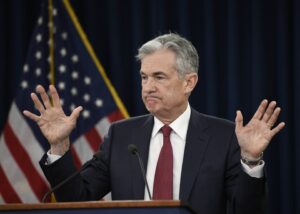September Fed Rate Cut: Why Day Traders Should Prepare for a Hawkish Surprise
Fed expectations vs. market reality
The S&P 500, currently hovering above 6400, has rallied on expectations of a September Fed rate cut. Fed funds futures are pricing an 85% chance of a quarter-point reduction. But the real risk for day traders isn’t whether the cut happens—it’s how Chair Jerome Powell frames the path forward. A single cut paired with hawkish messaging could spark selling pressure and tighten intraday ranges across indices.
Why this matters for intraday setups
For day traders, what the Fed says often matters more than what it does. If Powell signals a cautious stance—emphasizing inflation still above target at 2.6% PCE—markets may price out multiple cuts. That repricing could lift the two-year Treasury yield back toward its May high of 4.06%. When yields rise, equities usually pull back, creating opportunities for traders to play both sides of volatility.
Intraday playbook around Fed events
| Market Trigger | Day Trading Implication |
|---|---|
| Rate cut delivered | First spike often fades—watch VWAP and premarket HOD for rejection zones. |
| Hawkish Powell tone | Expect fast downside rotations in S&P futures (ES) and Nasdaq (NQ). Ideal for short scalps on failed breakouts. |
| Two-year yield climbing | Monitor inverse correlation: rising yields can trigger intraday sell-offs in high-multiple tech names. |
| Dovish surprise | Momentum setups above VWAP; favor ORB continuations in growth-heavy sectors. |
What to watch in Jackson Hole
Before the September meeting, Powell speaks at Jackson Hole. Traders should expect signals about whether September will be a one-off cut or part of a series. The market is currently priced for more than two cuts by year’s end. If Powell pushes back, intraday volatility will spike in equity futures, and liquidity pockets around key levels could offer clean scalp opportunities. See Barrons Why the Fed Will Disappoint the Stock Market, Even if It Cuts Rates in September.
Risk and reward balance
High valuations mean stocks are vulnerable to disappointment. If the S&P 500 multiple contracts from 22.5x back toward May’s 21.4x, that implies a 5% pullback to around 6100. For day traders, that’s less about the macro forecast and more about recognizing that trend days down are possible if the Fed doesn’t meet market hopes. On the flip side, any dovish surprise could fuel another leg higher in Big Tech momentum names.
Bottom line for day traders
The September Fed rate cut and day trading connection is simple: don’t anchor on the cut itself. Focus on the messaging, the reaction in yields, and how equities respond around VWAP and opening ranges. This is a textbook environment for news-driven intraday volatility—perfect for disciplined traders with clear entry and exit rules.
Disclaimer: This article is for educational purposes only and not investment advice. Day trading involves substantial risk. Manage size and use defined stops.

